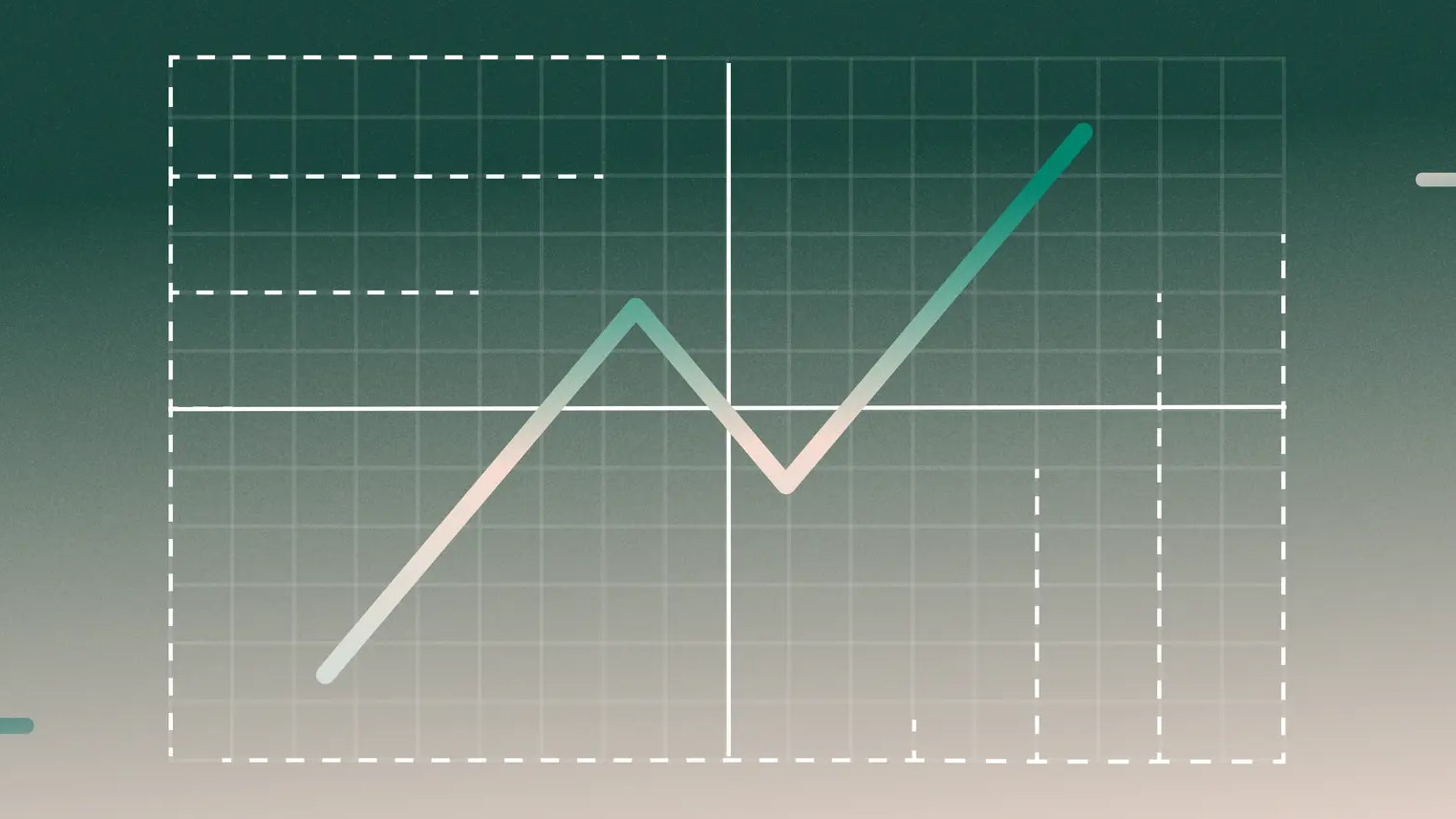Understanding your startup’s finances through vertical and horizontal analysis

As your startup scales, so will the complexity of your finances. Maybe you’ve taken the plunge and hired your first finance lead, or perhaps you’re doing your best to navigate financial decisions yourself, despite a background in product or sales. Whether you’re hands-on with your finances, or watching an Excel sheet over the shoulder of someone who is, it’s crucial that you understand the basics of your financial picture and have a foundational understanding of how to interpret raw numbers into core takeaways.
Generally, there are two approaches to analyzing financial data: vertical analysis (also called ratio analysis) and horizontal analysis (also called time-trended analysis). Each has its clear use cases and benefits, and the reality is that you’ll probably find yourself shuffling between both of them to understand your finances on a deeper level.
What is vertical analysis?
Vertical analysis involves evaluating line items on a financial statement as a percentage of a base item. Typically, the base item is the total revenue from the income statement, and the line items represent different buckets of expenses. Vertical analysis makes it easier to understand the correlation between those different line items and a core business metric, like revenue. (For example, looking at marketing expenses as a percentage of revenue).
As an example, let’s say you have a young marketing agency and your quarterly income statement for Q1 looks something like this:
The vertical analysis will allow you to understand each line item on this statement — COS, gross profit, opex, and net income — as a percentage of total revenue for a particular month. So, for example, a vertical analysis looking at the month of December in Q4 2023 would look something like this:
- Revenue: $60,000 = 100% of revenue (base figure)
- COS: $48,000 = 80% of revenue
- Gross profit: $12,000 = 20% of revenue
- Operating expenses: $48,000 = 80% of revenue
- Rent: $3,000 = 5% of revenue
- Payroll: $25,000 = 42% of revenue
- Marketing: $20,000 = 33% of revenue
When to rely on vertical analysis
Vertical analysis can provide you with clear and concise insight into the relative proportions of a financial statement. Typically, it’s one of the first data points potential investors will want to understand: compared to your base item (typically, total revenue and total assets), how much are you spending on hardware, office space, or data storage? Vertical analysis helps to understand (and, ultimately, optimize) the composition of costs, but it’s also useful when you want to understand financial performance compared to industry benchmarks (e.g., the industry benchmark for software spend as a share of revenue is 19%, but your company is spending 45% of total revenue on software).
Vertical analysis is especially useful during early-stage planning, as you budget and start laying down your financial forecasts. But you’ll come back to it often: vertical analysis is crucial in understanding cost structure and allocation of resources during a given time period, especially as you consider big purchases, new hires, and all the other costs (and revenues) that come with scaling a business.
Vertical analysis is useful regardless of the stage of your company. For earlier-stage companies, it can help you understand how various expense items and your cash burn/profitability compare to your revenues. If the resulting ratio percentages are very high, it can be a good signal that your costs are scaling too quickly relative to how your revenue is growing.
For later-stage companies, investors will often want to see improvements in operating leverage over time, meaning those ratio percentages decline over time to show that revenue is growing faster than expenses. They’ll also benchmark you against similar competitors in your industry to understand how efficient you may be relative to others. Again, there very well may be reasons why your ratios are different but being armed with the vertical analysis helps equip you to better tell your company’s story.
Where vertical analysis falls short
While vertical analysis is effective for cross-sectional analysis, it might not always tell the full story, especially when you’re making comparisons over time. This isn’t necessarily a bad thing — but do make sure you’re filling in context with qualitative data before jumping to conclusions. If we go back to our pizza example: just because mushrooms account for a huge percentage of your spend, that doesn't necessarily mean you should jump to making changes. Perhaps they’re known for having the best, cheapest mushroom pizza in the area, and that reputation brings in hordes of people who spend a lot of money on higher-revenue items, like soft drinks and alcohol. It’s important to know your line items in comparison to your base, and know how to compare them to industry benchmarks — but just because you’re out of line with an industry benchmark, don’t jump to the conclusion that you’re doing something wrong.
What is horizontal analysis?
Horizontal analysis, sometimes referred to as trend analysis, involves comparing financial data between time periods in order to identify trends and patterns. This is a useful way to better understand the direction in which financial metrics are moving.
If we go back to the same marketing agency as an example, we can use horizontal analysis to look at change and trends between two different months.
Example income statement
October 2023 | November 2023 | December 2023 | |
|---|---|---|---|
Revenue (sales) | $40,000 | $50,000 | $60,000 |
Cost of Services Sold (COS) | $30,000 | $39,000 | $48,000 |
Gross Profit | $10,000 | $11,000 | $12,000 |
| | ||
Rent | $3,000 | $3,000 | $3,000 |
Payroll | $20,000 | $25,000 | $25,000 |
Marketing | $10,000 | $30,000 | $20,000 |
Operating Expenses | $33,000 | $58,000 | $48,000 |
| | ||
Net Income | –$23,000 | –$47,000 | –$36,000 |
So in this case, we can look at November versus December, for example. This will allow us to calculate the absolute and percentage change for each line item between the two months:
- Revenue:
- Absolute Change: $60,000 - $50,000 = $10,000
- Percentage Change: 20% increase
- COS:
- Absolute Change: $48,000 - $39,000 = $9,000
- Percentage Change: 23% increase
- Gross profit:
- Absolute Change: $12,000 - $11,000 = $1,000
- Percentage Change: 9% increase
- Operating expenses:
- Total Absolute Change: $48,000 - $58,000 = $10,000
- Total Percentage Change: 17% decrease
- Net income:
- Absolute Change: –$47,000 + $36,000 = -$11,000
- Percentage Change: 23% increase
When to rely on horizontal analysis
Rely on horizontal analysis for regular financial health checks over time, and to understand how factors (both inputs and outputs) are changing as your business scales. Also, use horizontal analysis to understand and communicate trends (the bad and the good) with investors. Horizontal analysis enables you to detect trends and patterns, which is a great way to both understand what’s working as well as to catch issues before they spiral out of control. In the case of the marketing agency, a horizontal analysis will show that revenue increased by 20% between November and December, while COS increased 23%. This means that the cost-revenue ratio got slightly worse in between the two months. But operating expenses decreased significantly because of lower marketing spend, which could be a signal that your agency is growing efficiently.
Where horizontal analysis falls short
While trend analysis is important, horizontal analysis doesn’t provide sufficient context for understanding the underlying cause of trends. External factors like changes in the market, economic conditions, and industry trends can all impact the results of horizontal analysis, and founders should be cautious to take these factors into account before assuming internal factors are the cause for changes over time.
Horizontal and vertical analysis together tell a full story: context is king, and the most accurate picture of a company’s financial situation can only be understood when both pieces of the puzzle are considered in tandem. No matter how you cut it, stay close to your data to understand trends, insights, and patterns, but make sure to take a step back sometimes, too: marrying financial analysis with your own observations and knowledge will help you tell the most complete picture as you continue to scale.
Related reads

5 bookkeeping mistakes founders make — and how to avoid them

Writing your first startup treasury policy

How to reduce operating expenses
